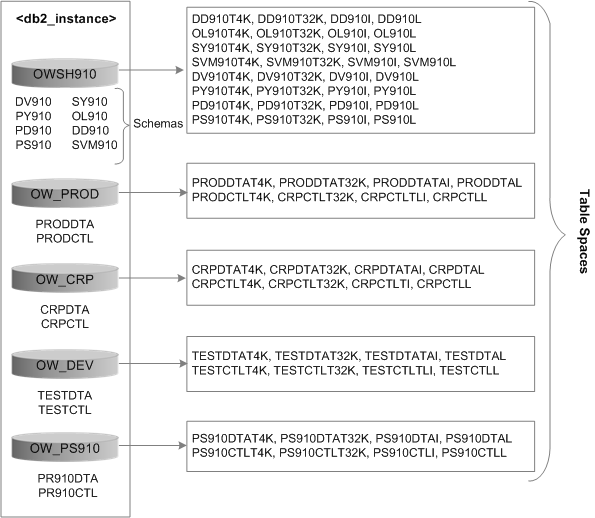DB2 for Linux, UNIX, and Windows
Every data element in a database is stored in a column of a table, and each column is defined to have a data type. The data type places limits on the types of values you can put into the column and the operations you can perform on them. IBM i includes a set of built-in data types with defined characteristics and behaviors: character strings, numerics, datetime values, large objects, nulls, graphic strings, binary strings, and datalinks.
When organizing the data into tables, it is beneficial to group tables and other related objects together. This is done by defining a schema. Information about the schema is kept in the system catalog tables of the database to which you are connected. As other objects are created, they can be placed within this schema.
Each schema has a set of four dedicated tablespaces in which the data is physically stored. IBM recommends that each tablespace be stored on a separate disk drive.
This diagram illustrates the DB2 for Linux, UNIX, and Windows database 8.1.4 structure with EnterpriseOne:

